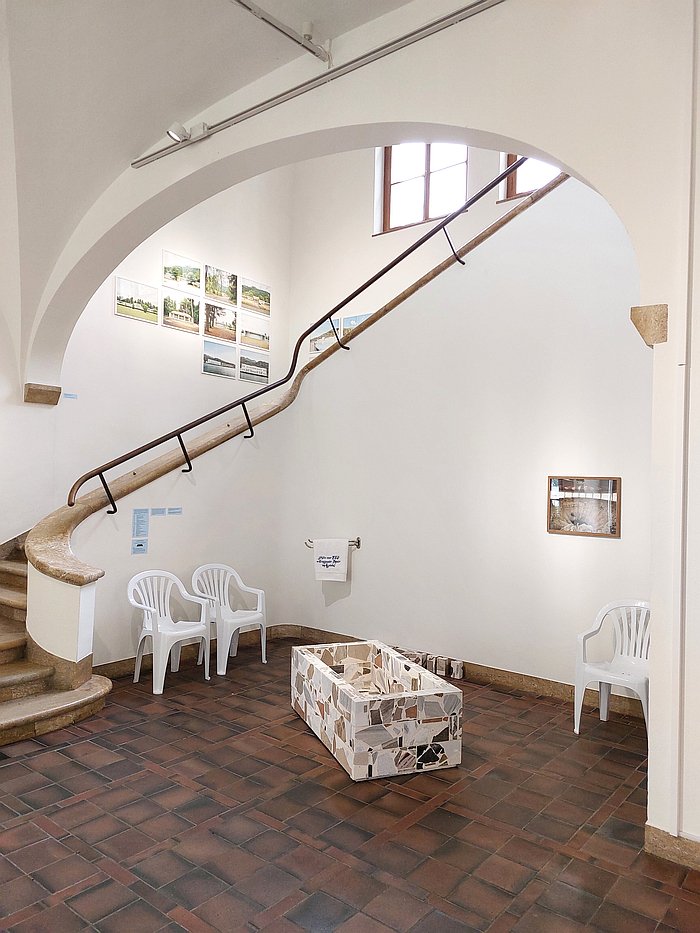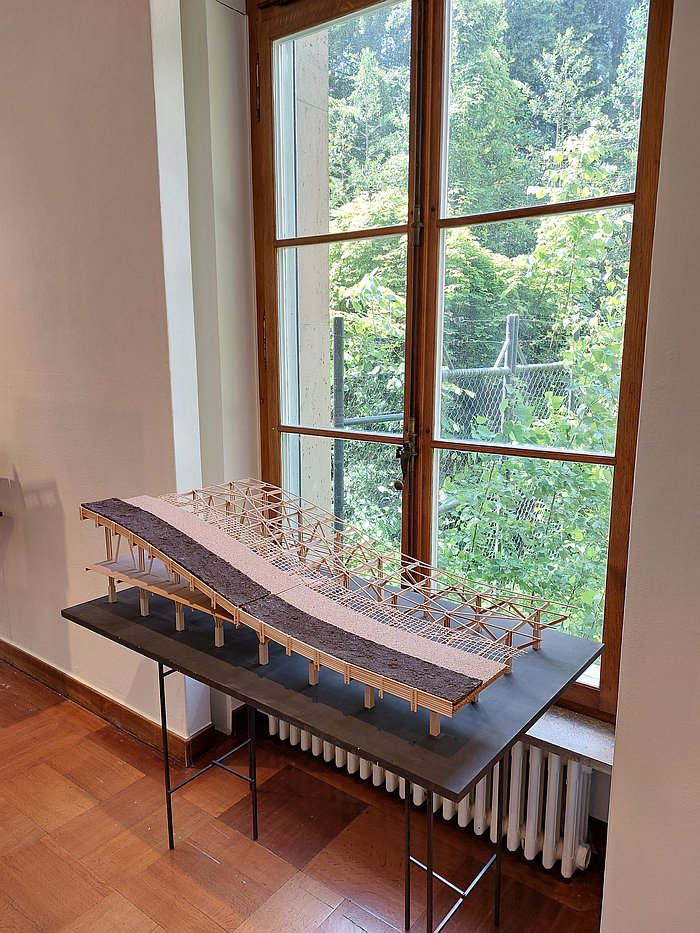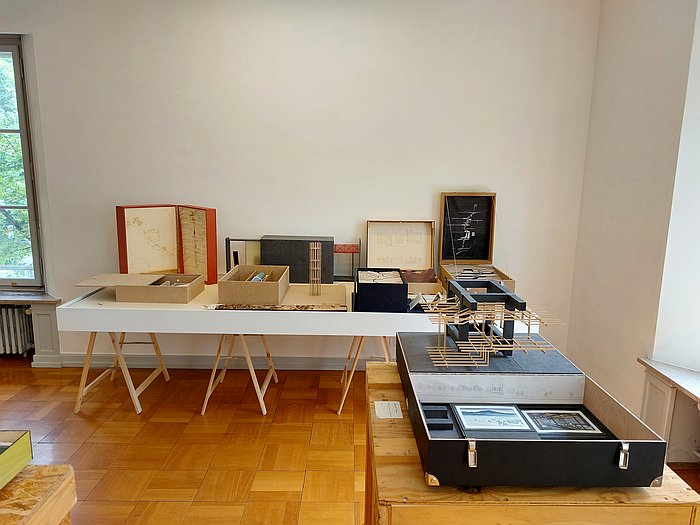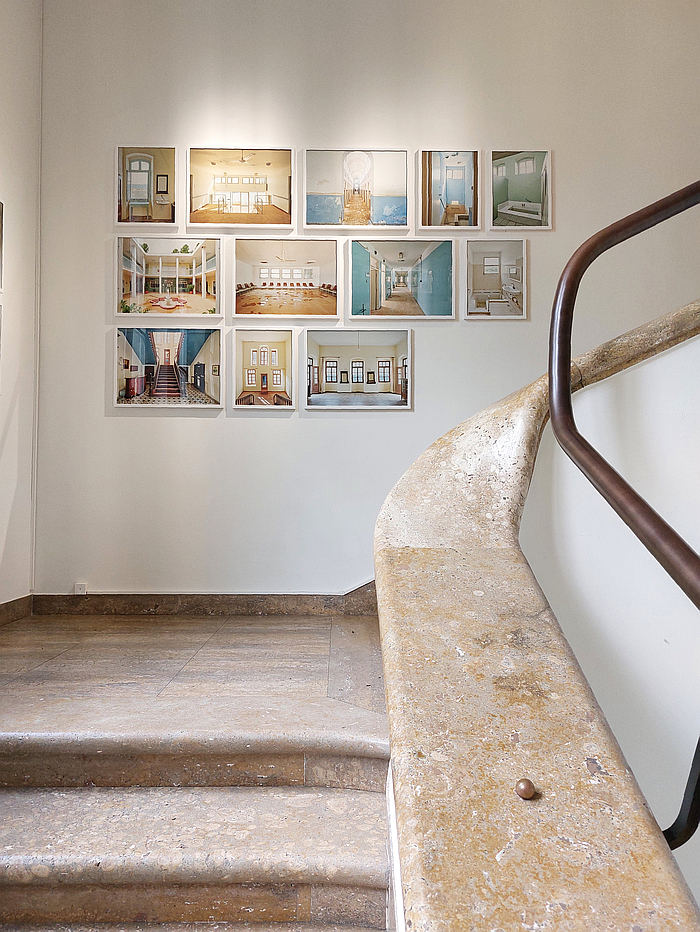Water is, and long has been, one of the most important resources for human society. Not just as a life-giving elixir for the human species and the flora and fauna with whom we share the planet and on whom we rely for our existence, but also as a source of power, as a basis for hygiene, as a transportation conduit, as a cultural identifier, as focal point for communities, as a location for fun, etc, etc, etc.
Factors neatly elucidated by the Limmat that flows through Zürich, the Zürichsee into which flows and also the snow on the distant Alps, the glaciers in those Alps.
In recent decades however the activities of human society have seen our relationships with water slip out of kilter: sometimes we have too much, sometimes too little, and ever more often water is to be found where it previously wasn't. Where it is a problem. With all the inevitable consequences that brings for human society, with all the consequences that brings for the possibilities of human civilisation, the future development of human society and the composition and harmony of global human societies.
Given that we can't undo the myriad problems we've caused the necessity now must be to find ways to realign our relationships with water in context of contemporary and future realities.
With Water and Time in Education and Design the ZAZ Bellerive - Zentrum Architektur Zürich explore how architecture can, should, ¿must? change in context of contemporary and future water realities, and for all the role of the training of coming generations of architects and urban planners in enabling, empowering, ensuring, those changes.......
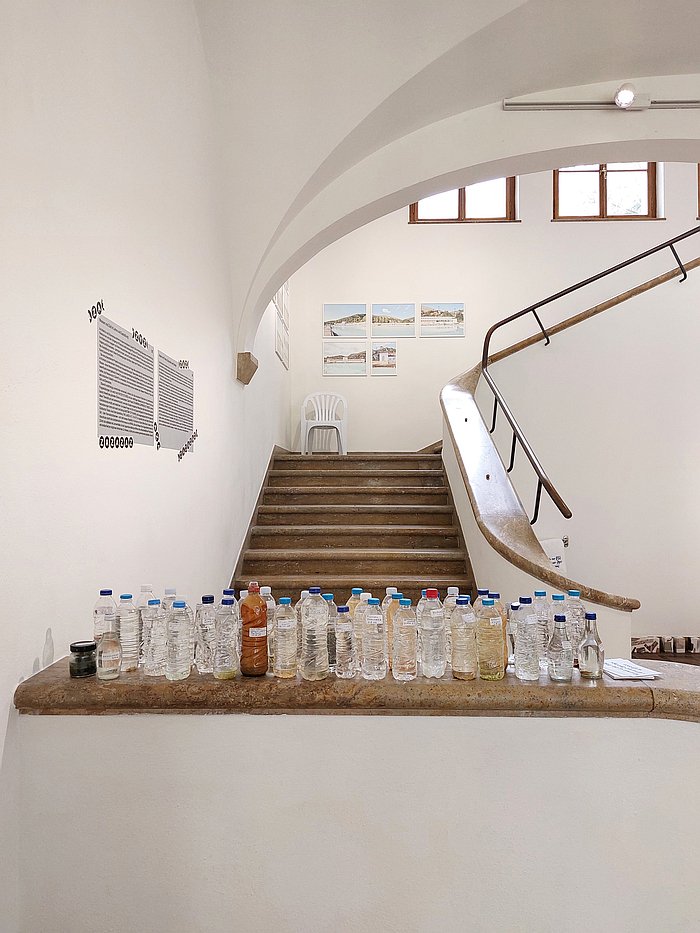
Questions approached in Water and Time in Education and Design via four international projects, three architecture school based and the non-(formal)-academic 750 Mineral Springs of Greece a presentation of the work of the Zürich based organisation Friends of the 750 Mineral Springs of Greece; a collective whose name is taken from the title of Nikolaos Lekkas' 1938 book The 750 Mineral Springs of Greece which, according to the Friends, who we don't doubt for a minute, but we haven't read the book ourselves and so can't comment, "shows how the scientific analysis of mineral springs, rocks, and soil in Greece led to a new understanding of the country’s resources: its airs, waters and places".
A question well worth asking, re-asking, nearly a century later.
To this end via a mix of research, activism, art, mediation, gatherings etc, the Friends seek to document, maintain, rescue, celebrate the myriad mineral springs of Greece; mineral springs whose place in the culture of the region reaches back to antiquity, are in many regards at the basis of much of that region's contribution to society's understanding of itself and its subsequent development, were key to the development of the contemporary Greece, define the urbanisation of Greece as it moved from antiquity to today. But many of which today are either threatened by contemporary society, neglected or already lost, untraceable. As is that which they can teach us.
Considerations on water shaping society and society shaping water and the consequences of being actively aware of that inherent interplay also very present in Water Futures, a cooperation between the Technische Universität Munich and the Accademia di Architettura di Mendrisio that, and much as with Water Pressure. Designing for the Future at the Museum für Kunst und Gewerbe, Hamburg, focusses on water as more than just a commodity, more than just a liquid, and rather approaches it in context of not just the inherent two-way interplay between human society and water but also water as something independent of human society, an entity in and of itself.
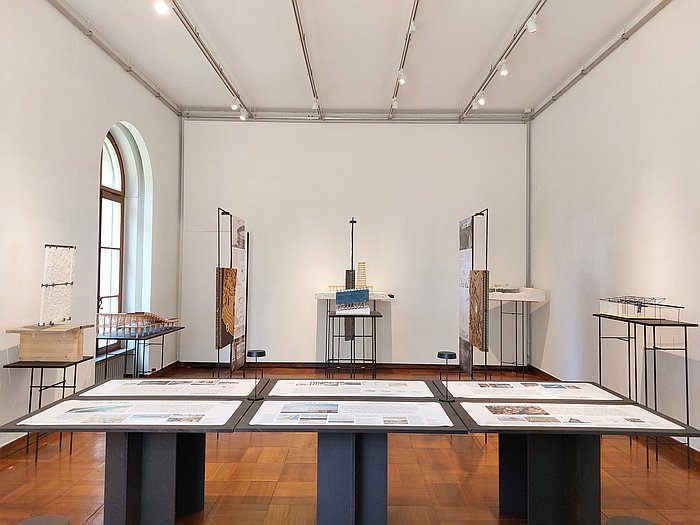
Consideration approached by students at the two institutions via works realised in semester projects such as, for example, Water Ever at the Technische Universität Munich which challenged students to develop solutions to the myriad, at times juxtaposed, challenges faced to both the natural and the human-built world in context of climate change's impact on water, and that amongst other solutions brought forth Opposites Attract by Lucy Pritchard, Rebecca Ruggerini and Giacomo Torcoletti that proposes a flood defence system for the town of Forlì in north-east Italy that not only sets a flood water collection and storage tank at the heart of a new landscaped park, but foresees that flood water collection and storage tank as an amphitheatre, a public space, for those greater many days when it isn't required as a flood water collection and storage tank. And thereby enabling wider considerations on how the changes that are upon us, and are still to come, can affect and impact our urban spaces positively. As well as negatively.
Or the semester project Rethinking Architecture and Infrastructure in View of Rising Seas at the Accademia di Architettura which looked at contemporary and future realities in locations as diverse as, for example Singapore, Chinas' Pearl River Delta or Venice, the latter seeing Arthur Vincent and Loïc Janet research the impact of the Modula Sperimentale Elettromeccanico, Mo.S.E. marine barrier, a construction designed to protect Venice from rising sea levels but which, potentially, is having negative ecological consequences on the marine environment and thereby on the terrestrial environment, and which thus focusses attention on the problems our solutions to problems often cause, and thereby the necessity to avoid problems.
A thought effortlessly translated into a myriad other contexts.
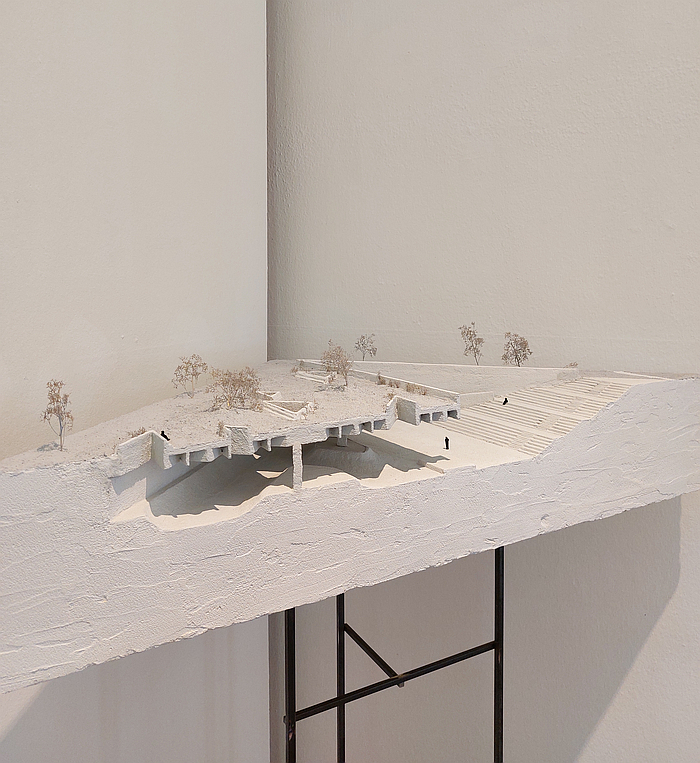
While students based in Mendrisio were thinking about water in global contexts students from the Department of Architecture at the ETH Zürich were thinking about water in, when not specifically Mendrisio then certainly, the Canton of Ticino in southern Switzerland to which Mendrisio belongs via the project Anatomy of Change. A project which explored the territory, (hi)story and architectural evolution of Ticino in context of three temporal frames — temporary, circular and permanent — by way of exploring and experimenting with alternative approaches to and practice of architecture and urban planning. A translation, if one so will, of the developments of the region, its flora and fauna to architecture and urban planning, a learning by the built world from the natural world.
And which aside from other projects saw Aglaia Beer and Tuyet Nguyen's proposal for floating islands to enable camping directly on Lake Locarno, and thus promotion of a low(ish) footprint tourism that is responsive to the regular flooding of the lake without creating massive, permanent interventions in nature; or Simon Burkhard and David Hauser's proposal for a modular, responsive, adaptable, construction system where, and as with many of the Radical architecture visions of the 1960s and 70s, modules can be replaced, the building can be remodelled, as and when demanded or necessary. A construction system specifically based on the looms that wove the silk that was once an important industry in the region. Along with spaghetti cultivation. And thus an interesting and instructive take on the past informing the future. Or Marco Weibel, Philip Einhaus and Silvian Muff's La Cristallina, a construction for storing the snow that falls in the high-valleys of Ticino and employing it to manage the local ambient climate. That local climate management that, as we would have discussed from Hot Cities. Lessons from Arab Architecture at the Vitra Design Museum Gallery had the Vitra Design Museum not pulled it after Dr Spiegel got cross and angry about it, and before we could publish our much more positive thoughts on it, is going to be ever more important in Europe in coming decades and which we need to start planning and building for now.
We know that future is coming.
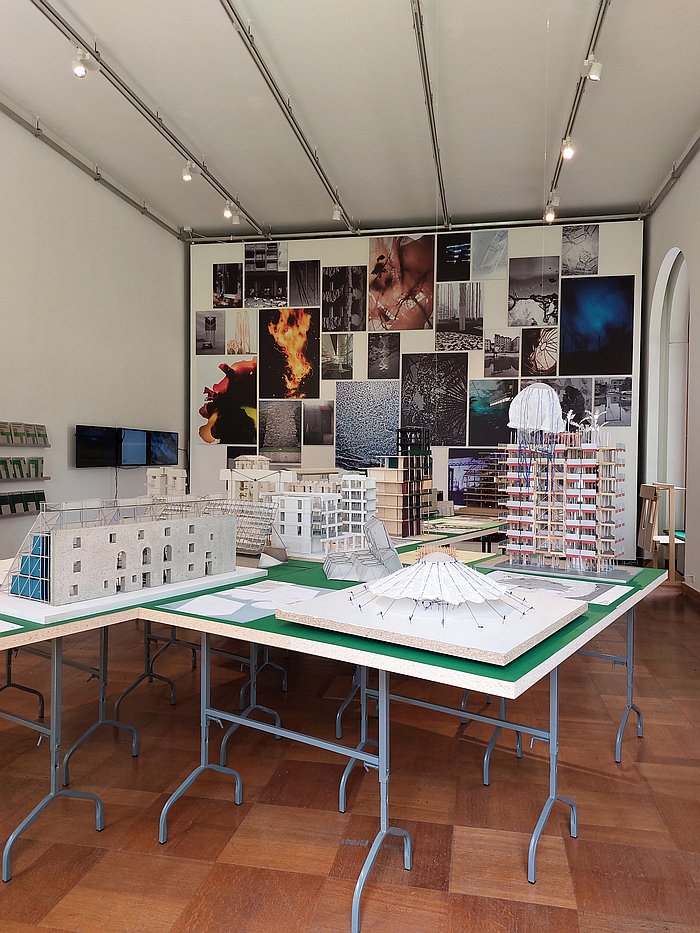
The final project of the quartet, Two Lakes a joint initiative of the Institute of Architecture at the Hochschule Luzern and Kyoto Institute of Technology's KYOTO Design Lab, explored, and compared and contrasted, juxtaposed, the cultural and environmental relevance and importance of Lake Lucerne, Switzerland, and/with Lake Biwa, Japan, in context of the parameters Danger, Beauty, Commons and Eternity, a discussion on the importance and relevance of two major lakes beyond the physical of the water they contain that brought forth a very pleasing recollection of Mark Braun's project Reichtum. Wasser + Glas in conjunction with J & L Lobmeyr in context of Vienna Design Week 2010 and its inherent reflections on the value of water bodies beyond the physical liquid contained therein.
And Lakes Lucerne and Biwa discussed and explored in Water and Time in Education and Design by a selection of proposals for and reflections on the respective water bodies developed by the students of both institutions; proposals presented in a container comparable with a piece of cabin luggage, a size limitation by way of both enabling a readily transportable presentation and also, primarily, of reducing material use in model construction, one of those unseen contribution architecture, and design, makes to our global footprint. And also by selection of publications that arose in the course of the five year project that delve deeper into the various themes and relationships researched.
A project that was as much reflections on architecture and the built environment, about relationship between water and architecture, as it was about not just Lakes Lucerne and Biwa, but our myriad global lakes and their varied and various roles in society and possible futures for them, and us all.
On the inextricable material and immaterial links between the future of the planet's water and human society.

A homogenous presentation of four very different but naturally, effortlessly, interlinking projects, in which all four projects are pleasingly given the freedom to find their own way to fit into the spaces of Villa Bellerive which houses ZAZ; a villa that in its own way offers perspectives on human society's relationships with water in context of the bathroom, one of the, as far as we could ascertain, only maintained, preserved, as were rooms in the villa and that serves as a location for a brief history of the villa and its architect Alfred Breslauer, and whose lavishness and profusion of water provision reminds of a time when society didn't really think about water. You turned on a tap and it was there. Turned off the tap and it stopped.
A Time in context of Water that is not only behind us, but must be left in that past. Achieving such requiring changes in both Design and Education in comparison to such in conetxt of Villa Bellerive.
Or put another way, our contemporary use of and relationship with water is appalling. Unsustainable.
Certainly in context of architecture and construction, professions with historic high uses of water that not only need to reform but that stand as an admonishment to act in context of the water use of AI and the foreseeable problems the inevitable greater use of AI will bring with it. It's perhaps pushing things a little to far but the real danger from AI for human society may not be the much discussed autonomous bots but the much less discussed empty lakes and reservoirs.
Yet for all architecture and construction are part of the contemporary problem, or perhaps more accurately, exactly because architecture and construction are part of the contemporary problem, they also offer a good basis for helping us navigate the future path. But for that coming generations of architects must be sensitised to both the problems architecture and construction cause, not just in terms of water but in terms of the wider natural world, and also in terms of the delicate fabric of society, and also empowered to see how appropriately designed projects can help negate contemporary and future challenges. Coming generations must be trained that architecture isn't about ego and signature projects and corporate identity projects, certainly isn’t about the representation of Villa Bellerive and the other projects of an Alfred Breslauer and his contemporaries, but a responsibility to society. As is design.
With its mix of projects, proposals and positions Water and Time in Education and Design very neatly elucidates how such is being approached, allows access to reflections on a possible future for architecture education, for architectural research, practical and speculative, and is also a meaningful space in which to reflect on your own relationship with water, as an individual and as a member of various collectives. Our contemporary malaises aren’t just architects' fault, much as we all wish they were, rather they start and end with us all, individually and collectively.
Thus when you leave Water and Time in Education and Design you can reflect differentially on not just the Zürichsee on whose shores ZAZ Bellerive - Zentrum Architektur Zürich stands and its myriad roles in context of Zurich past, present and future, but also the myriad contexts of the Limmat and the snow on the distant Alps, the glaciers in those Alps, and what happens, what the means, how things change, when all that isn't there...
Water and Time in Education and Design is scheduled to run at the ZAZ Bellerive - Zentrum Architektur Zürich, Höschgasse 3, 8008 Zürich until Sunday August 10th
Further details can be found at www.zaz-bellerive.ch
